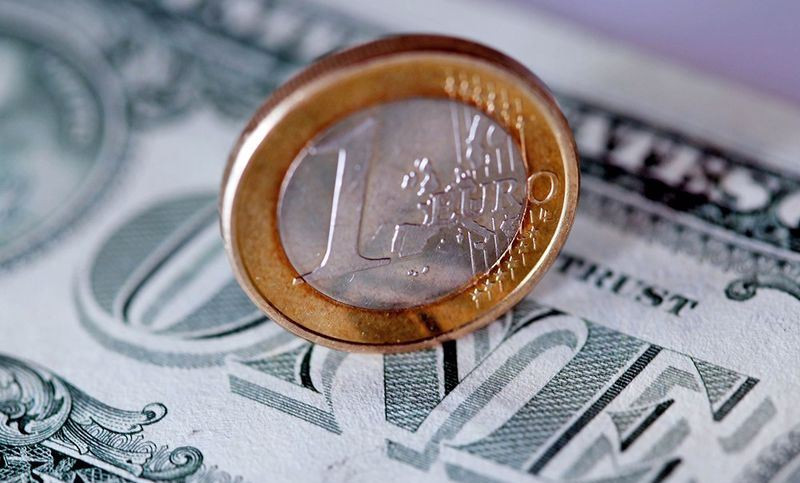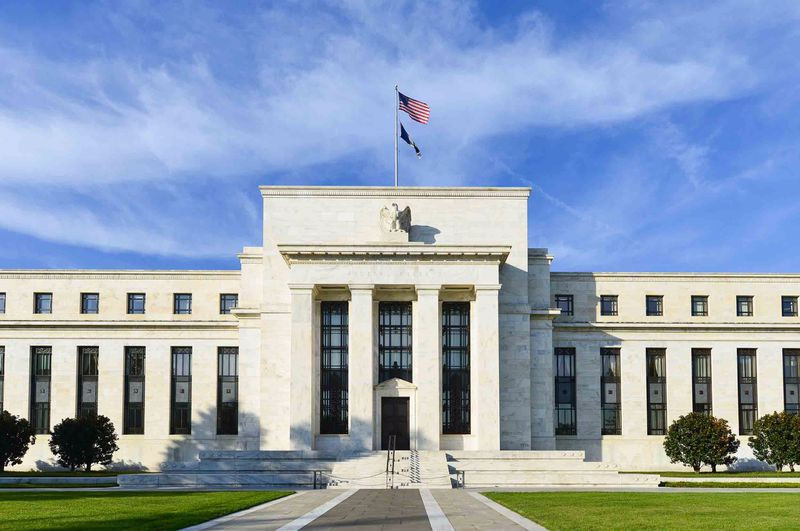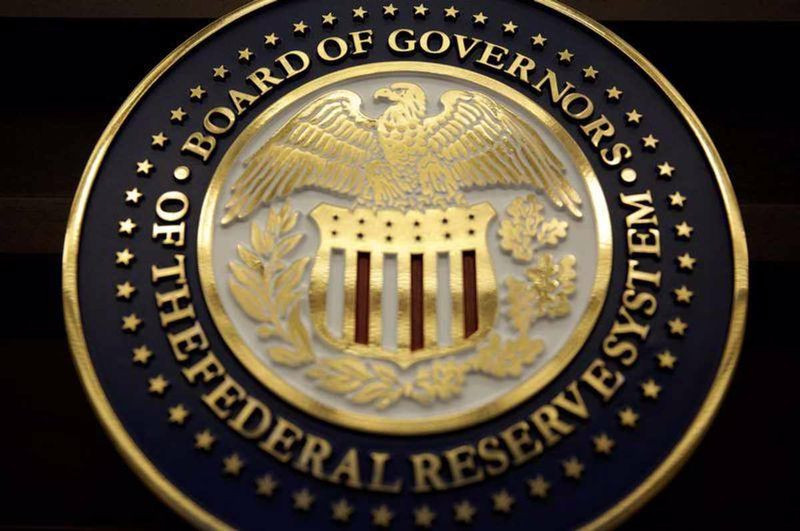
In Tuesday's trading session, the greenback edged up about 0.1% against its major peers, including the euro, finishing at around 113.20 points and posting its fifth straight session of gains.
In the first half of Tuesday, the greenback reached its highest values since September 29, having risen above 113.40 points.
This comes after the International Monetary Fund warned that countries that account for about a third of global GDP could be in recession next year.
While the dollar benefited from increased demand for defensive assets, futures for major US stock indexes fell by an average of 0.3-0.4%, and the EUR/USD pair plunged to almost two-week lows in the 0.9680 area.
But then market sentiment improved slightly as investors turned their attention to the comments of two FOMC officials the day before, seeing in them hints at a possible loosening of the Federal Reserve's grip.
Fed Vice Chair Lael Brainard said on Monday that the rate hike is starting to slow the economy, perhaps more than expected.
She also noted that the cumulative effect of the simultaneous global tightening of monetary policy is greater than the sum of its parts. This, according to Brainard, creates potential risks that US officials need to monitor.
As for politicians' projections that see the federal funds rate rise to around 4.6% next year, Brainard said those projections are based on expectations about how the economy will develop.
"Everything can change," said Brainard.
She stressed that the path and pace of rate hikes will remain data-driven as the central bank monitors the economy and the evolution of domestic and global risks.
Chicago Fed President Charles Evans, in turn, pointed to the unusual behavior of the US economy, which should allow the Fed to reduce inflation without a significant increase in unemployment, if the central bank moves towards a reasonably restrictive policy carefully and prudently.
Thus, these two Fed officials have brought a small measure of caution to the discussion about future US interest rate hikes.

In the European trading hours on Tuesday, the protective greenback was under pressure, sinking to a local low of about 112.30. At the same time, futures on key Wall Street indicators returned to positive territory, extending a helping hand to EUR/USD.
They maintained positive dynamics after the opening of trading in New York.
At the moment, the S&P 500 showed an increase of 0.8%, and the EUR/USD pair was approaching the 0.9800 mark, bouncing off recent lows by almost 100 points.
However, by the close of the US session, the broad market index fell again, falling by 0.65% during the day, to 3,588.84 points.
The main currency pair also lost the points scored and ended the day almost unchanged near 0.9705.
The euro experienced difficulties moving forward, as the governor of the Bank of France, Francois Villeroy de Galo, left doubts that the European Central Bank will be able to keep pace with the Fed in terms of raising the key rate.
He said it was too early to say whether the ECB should raise its key rate by 50 or 75 basis points at its October 27 meeting.
Meanwhile, the greenback managed to shrug off its daily losses.
The results of the New York Federal Reserve survey published on Tuesday showed that medium-term inflation expectations in the United States are still growing. On the horizon of three years, Americans forecast inflation at 2.9%, although in the previous survey the figure was 2.8%. Expectations of inflation for five years ahead rose to 2.2% from 2%.
"Unacceptably high and persistent inflation remains a key problem facing the U.S. economy," Cleveland Fed President Loretta Mester said on Tuesday.
"Monetary policy is moving into restrictive territory, and it will take some time to direct inflation on a steady downward path towards our 2% target. I don't expect any reductions in the federal funds target next year," she added.
These comments helped USD regain its composure.
Additional support for the greenback was provided by US Treasury Secretary Janet Yellen.
She made it clear that politicians in Washington are not concerned about the strong dollar at the moment.

"The market value of the dollar meets the interests of America, and the movement of exchange rates is a logical result of differences in monetary policies," said Yellen.
On Wednesday, the greenback was trading in the range of 113.00-113.30, leaving no attempts to extend the winning streak to six days.
This week, the USD movement to the upside has stalled around 113.60.
If the dollar bulls push up and take the barrier at 114.00, then their next target will be the 2022 high at 114.78 (from September 28) on the way to the round level of 115.00.
Key Wall Street indicators fluctuate between gains and losses on Wednesday, reflecting the cautious mood of market participants.
The EUR/USD pair is also trying to find a direction, changing within 60 points.
Investors are refraining from decisive actions ahead of the release of the US inflation report for September. These data may determine whether the Fed will continue to aggressively raise rates after November 2 or whether slowing down the rate hike process will be appropriate.
In the report, the most important figure is the basic consumer price index for the month.
There are three scenarios:
1. If the indicator grows by 0.5% or 0.4%, stock market players will breathe a sigh of relief, and currency traders will record profits on long positions in USD – but only as an initial reaction. Then the pressure on stock prices will resume, and investors will return to buying the dollar.
Such an outcome will leave expectations of a 75 bps increase in the federal funds rate in November virtually unchanged.
Later, Fed officials are likely to confirm their position that additional rate hikes are required to combat inflation, which is still too high.
2. If the indicator is 0.3% or lower, it will be a result that will provoke a significant increase in stocks and a significant sell-off of the dollar.
In this case, the futures market will begin to put in quotes a moderate increase in the federal funds rate by 50 bps in November.
3. If the indicator grows by 0.6% or 0.7%, it will cause a massive buying of the dollar, as well as a stock market collapse.
In this scenario, the markets will start speculating again about raising the federal funds rate by 100 bps in November.
Goldman Sachs strategists believe that it is too early for investors to expect a dovish reversal in the Fed's policy.
According to them, it is necessary to show signs that the US economy has begun to fluctuate before the Fed changes its course.

"In the near future, the central bank is unlikely to refuse a sharp increase in the interest rate. As long as a broader set of macroeconomic data does not indicate an even more significant weakness in the US economy, we will lean against expectations in the market of a dovish reversal in Fed policy," Goldman Sachs analysts said.
"Movements on the benchmark S&P 500 stock index correlate very negatively with changes in the rate on 2-year treasuries, which also confirms our opinion that the US central bank is not ready to change course yet," they added.
Meanwhile, Charles Schwab analysts believe that the Fed, at least, will be forced to slow down the pace of rate hikes.
They point to strong volatility in the US government bond market, which is currently measured at 153, according to the Merrill Lynch Option Volatility Estimate, which is close to the level of March 2020, when the Fed began pouring liquidity into the financial system to fill the market during the pandemic.
The dollar's rise this year is also increasing volatility in markets outside the United States. The Fed's rate hike has a huge impact on the global economy, since most of the trade and debt securities are denominated in the US currency, Charles Schwab analysts said.
"Although we do not expect the Fed to stop raising the rate, we believe that strong arguments can be made in favor of the fact that market pressure may force it to slow down," they said.
Fears that the continued aggressive tightening of the Fed's policy could lead not only the US but also the global economy to recession remain the main driving force for the protective dollar, which is strengthening to the detriment of risky assets, including the euro.
The nearest support for EUR/USD is at 0.9680. If this mark turns into resistance, the bears' next targets will be the 0.9650 and 0.9600 levels.
On the other hand, the initial obstacle is located at 0.9720 (20-day moving average), followed by 0.9780 (100-day moving average) and the round level of 0.9800.





















